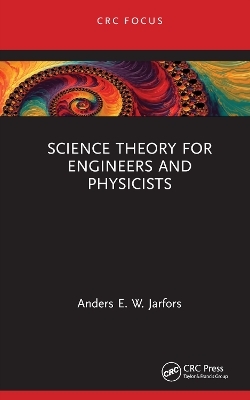
Science Theory for Engineers and Physicists
CRC Press (Verlag)
9781032846712 (ISBN)
This book is a concise hands-on guide that provides students a useful tool for a systematic approach to scientific inquiry.
Science Theory for Engineers and Physicists provides a basic understanding of "the method" as a question and to understand how a reliable answer that can be validated is constructed. It covers the basic terminology and methods which are exemplified for ease of understanding for the reader. Testing of hypotheses and quantitative understanding of uncertainty and uncertainty propagation are also illustrated.
The book is intended to be used with experimental work as a final or thesis project for undergraduate or graduate students who have not had prior experience in science theory or data handling and uncertainty.
Anders E. W. Jarfors is a Swedish researcher in materials and manufacturing. He earned an MSc and a PhD at the Royal Institute of Technology in Sweden. He has worked at the Royal Institute of Technology in Stockholm and the Swedish Institute of Metals Research (formerly KIMAB and now RISE and Swerim). He has also worked at the Singapore Institute of Manufacturing Technology and MMI Holding Pte Ltd in Singapore. He was also an adjunct associate professor at Nanyang Technological University. He has held guest and visiting professorships in China with the China Academy of Machinery Sciences and Technology and at Nanyang Technological University, Singapore. He is currently a professor of materials and manufacturing at Jönköping University and a visiting professor of sustainable manufacturing at Cranfield University. Professor Jarfors has a long list of empirical work in materials science and manufacturing processes ranging from metal casting and sheet metal forming to powder metallurgy and spray forming. His primary research interests are in metal casting and automotive components. He is an active teacher who recognized a need for a simple description of the foundations of the scientific approach. This is commonly seen in the approach and at the start of final-year projects where there are gaps in approach and the ability to understand what is proven and what is suspected.
1. Introduction. 2. Science and the Boundaries of Science. 3. Laws. 4. Definitions. 5. Hypotheses. 6. Design of Experiment. 7. Treatment of Measured Data.
| Erscheinungsdatum | 21.11.2024 |
|---|---|
| Zusatzinfo | 9 Tables, black and white; 8 Line drawings, black and white; 8 Illustrations, black and white |
| Verlagsort | London |
| Sprache | englisch |
| Maße | 138 x 216 mm |
| Gewicht | 330 g |
| Themenwelt | Mathematik / Informatik ► Mathematik |
| Technik ► Umwelttechnik / Biotechnologie | |
| ISBN-13 | 9781032846712 / 9781032846712 |
| Zustand | Neuware |
| Informationen gemäß Produktsicherheitsverordnung (GPSR) | |
| Haben Sie eine Frage zum Produkt? |
aus dem Bereich


